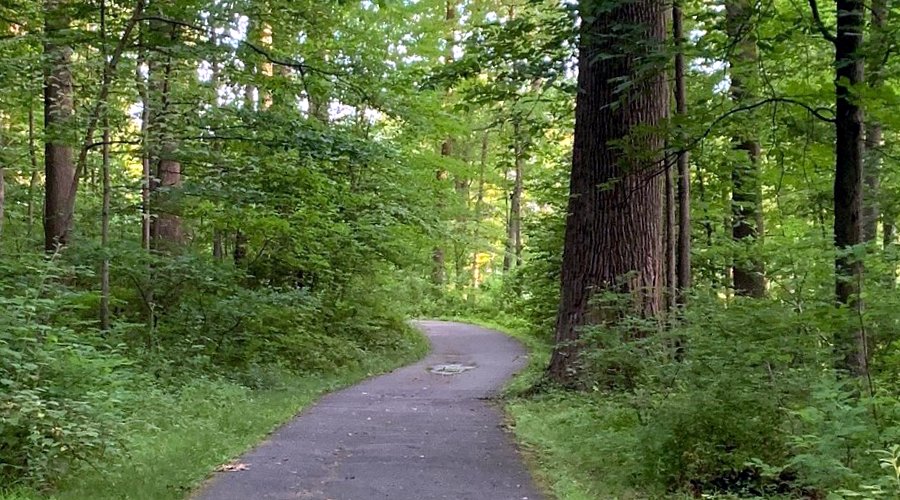Potholes, crumbling pavement, squirrels, and deer are among the beautiful variables in a walker’s life.
Two-mph (miles per hour) pedestrians and pedal-vehicles cruising at more than
three times that speed make for a potential crash and injury.
All of us can keep to the right side except to pass, honk or ring when overtaking, and pull off to talk or ponder.
If a mechanized vehicle — pedal, motor, or engine powered — is traveling faster than a marathon runner, it might be safer for them to use Sligo Creek Parkway.
This is an old problem on every street in Takoma Park.
The energy carried by moving objects is half their weight times their speed, multiplied again by their speed. (Inertial energy = 1/2(m*v^2))
Safest passage would be in separate lanes or roads, sorted by speed and weight.
Consider these physical approximations if designing a travel route:
- A pedestrian weighs 150 pounds and travels at 3 mph with a bone framework.
Inertial Energy = 675 - A bicycle weighs 200 pounds and travels at 15 mph with an aluminum framework.
Inertial Energy = 2,250 - A car or truck weighs 2,000 pounds and travels at 30 mph with a steel framework.
Inertial Energy = 900,000
Consider these operational factors
- The closing time between moving objects requires training the brain on distance and time.
- Collision damage varies by weight, velocity, and structural features.
- Collision avoidance is by understanding inertia and surface traction, and
- stepping off the road surface to stop, talk, or ponder, and
- slowing or stopping, and
- redirection by foot-planting, handlebar, or steering-wheel manipulation, and
- communication while in motion, and
- staying home.
Consider these design factors for a common route:
- Do we give the most dangerous heavy/high-speed vehicles freedom to move with others responsible for themselves by staying out of the way? Separate sidewalks and paths, or let’s make plans.
- Do we make driving unpleasant for heavy/high-speed vehicles to protect the lower energy travelers? Speed bumps that are hard bumps at 10 mph in a posted 25 mph max zone, low cross-traffic stop signs, chicanes (chicken game playing by perceived lane crowding), 7-foot parking lanes to crowd the moving lanes, turn radiuses less than ten feet forcing cars to use cross-traffic lane space, square-profile curbs and islands imposing on a thoroughfare
- Do we prohibit wheeled vehicles from pedestrian paths?
It would be nice to design a common route for the economy of land area and paving. It may be better to sometimes consider walkways through a block while cars go to a signalized intersection. This addresses cars and pedestrians. We need a thoroughfare design for pedal-powered vehicles that are threatened by cars and pedestrians that are threatened by bikes. This could mean three separate paved routes, complicating the construction in a limited space like a creek valley. The back-to-nature value would be diminished.
This is not a solution, but developing a definition of the problem. So what do you think?
(All of these questions will be easier to answer when the birth rate is passed by the death rate till the global population is half the current count of 85,000,000,000.)
What do you think?


